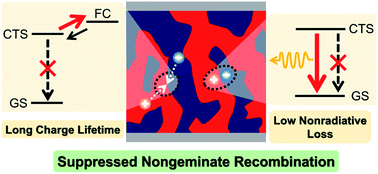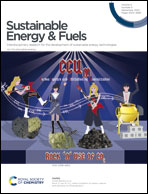Nongeminate charge recombination in organic photovoltaics
Abstract
Charge recombination is a major loss process in state-of-the-art organic photovoltaics (OPVs). Nongeminate recombination (NGR) is typically in competition with collection of photogenerated charge carriers to each electrode not only at the short-circuit but also at the open-circuit conditions, and therefore impacts on both external quantum efficiency (EQE) and fill factor (FF). In most cases, therefore, the optimised active layers are kept as thin as possible (typically ∼100 nm) to avoid NGR loss although it is not thick enough to absorb the solar light effectively. As such, a key to efficient EQE and FF is suppressing NGR beyond limitations arising from the Langevin recombination. In addition, NGR is closely related to open-circuit voltage (VOC) as well. In particular, nonradiative NGR is a critical loss process in OPVs. In this review, we aim to summarise our current understanding of underlying photophysics that governs NGR in OPVs. Recent experimental results and proposed mechanisms relevant to NGR are summarised where we highlight the significant importance of morphology and energetics for suppressing NGR. These insights will provide a comprehensive understanding of the recombination and future materials/devices design principles.

- This article is part of the themed collection: Sustainable Energy and Fuels Recent Review Articles


 Please wait while we load your content...
Please wait while we load your content...
